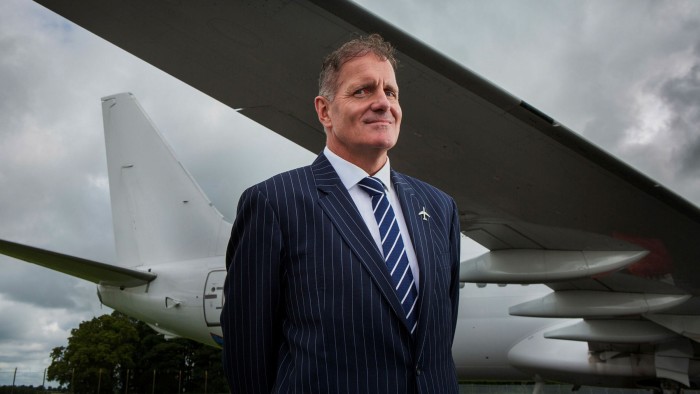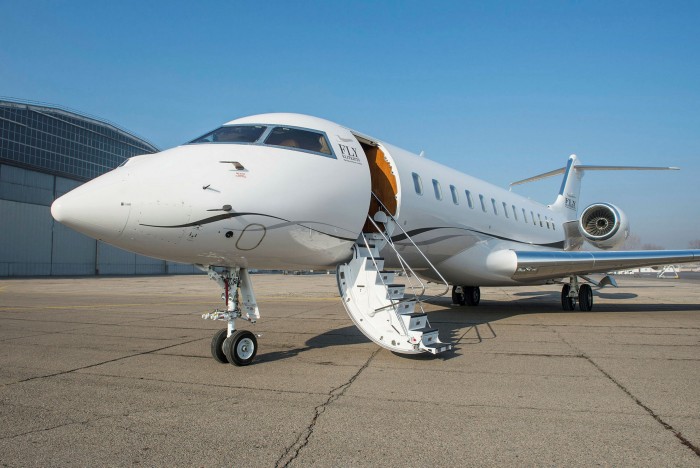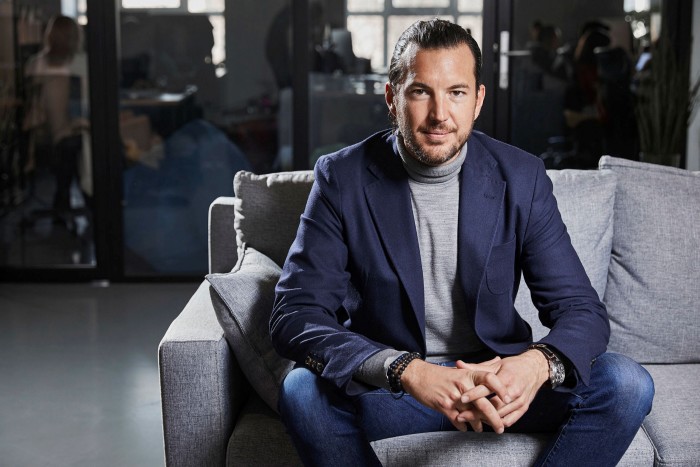High stakes: Private jets gain popularity but come with a fog of costs

Roula Khalaf, Editor of the FT, selects her favourite stories in this weekly newsletter.
For many of the corporate clients of London-based private jet management company FlyEliteJets, private aircraft are not so much a luxury as the best way to squeeze the maximum value from each minute of their time.
“These are fast-growing companies and the executives have to be in multiple places at once,” explains Chris Williams-Martin, founder of FlyEliteJets. “It increases their productivity if they can jet out of a smaller airport, go to two or three cities and jet back. They’ve done a day’s work on the plane and in meetings, there are no hotel costs and they’re still home in the evening.”
“They’re picked up by limo, there’s a 15-minute check-in, they’re taken to the jet steps and take off within minutes, so there is no dead time there. Moreover, private jets are quicker than scheduled jets; they fly at a different altitude [usually higher where there is less traffic] and much more directly, again saving time.”
For other clients, considerations such as privacy, security and convenience are equally important. “[They] are typically time-short, with many balls in the air at any one time, but they are also very private — they don’t want to be delayed and they don’t want to be seen publicly,” says Williams-Martin.

Different owners use their aircraft in different ways. Some treat their jet as a luxury, flying from time to time and in some cases making it available for charter. Others are airborne 400 or 500 hours a year, using it as their office. They see a private jet as a necessity.
“If you’re using your plane in a smart way, it becomes hard to get rid of because you gain so much time, flexibility and convenience — it can make you so much more productive,” observes Chris Marich, co-founder of jet spend management platform MySky.
The uncertainty at scheduled airlines during the pandemic has turbocharged the attractions of private jet travel. Passengers need not set foot in crowded airports, because these planes typically fly from small airfields, minimising waiting times. Clients travel with their own small group on a sanitised plane and may be able to reach countries where commercial flights have been restricted.

Growth in demand for private jets has soared, and the indications are that many former business- and first-class passengers are embracing them. Aviation industry market research company WingX reports that global business aviation activity for the first half of 2021 was up 42 per cent on the same period last year, compared with an upturn of less than 10 per cent for scheduled airlines. Moreover, it is gathering momentum, with record business aviation activity globally in June, up 10 per cent up on the pre-pandemic high point of June 2019. Similarly, FlyEliteJets reported a 150 per cent rise in bookings since the Covid-19 outbreak, despite the disruption from measures such as border closures and quarantine requirements.
Demand for these flights has been growing, despite widespread concerns about the disproportionate impact of private jets on climate change. In just one hour, a private jet can emit two tonnes of CO2, according to Transport & Environment, which campaigns for sustainable transport. That compares with the 8.2 tonnes each EU resident emits on average per year.
“Decarbonisation is extremely topical in the wider industry,” says Sam Cook, an aircraft financing specialist at US bank JPMorgan. “Developments are still at a very early stage, but advances in areas like sustainable aviation fuel are becoming increasingly important to manufacturers and operators, and to us as financiers.”
The pandemic has also fuelled a surge of demand to own private jets, particularly among ultra high net worth individuals — in the Americas especially, according to Chad Anderson, president of private jet broker Jetcraft. He puts that demand into context: in a typical balanced market, he says, 8-10 per cent of the global total of private jets (some 22,000, according to MySky) is available for sale. “Currently 5.2 per cent is available; that’s the lowest level of supply we’ve had in almost 30 years.”
Prospective owners need, however, to understand the web of costs involved, and not just in purchasing but in running a jet, warns MySky’s Marich. His company has created online products to make budgeting and payments smoother and more transparent. “For too long there has been a knowledge gap for private jet owners about the real cost of aircraft ownership,” he says.
So how do costs break down? Marich suggests that a decent 20-year-old jet could be acquired for $5m-$6m, but operating costs will amount to $2m-$3m a year. “Over, say, a 10-year ownership, that’s the really big expense, so it’s important to understand what you’ll be paying to keep and use your jet, quite apart from the purchase cost. It’s often not emphasised enough to new owners.”
Anderson identifies three elements to the total cost: acquisition, “the easiest to define”; direct operating costs that apply to every flying hour, including fuel, catering and crew; and fixed costs that must be covered whether the plane flies or not — such as hangar rental and insurance. Costs can also be affected by taxes, which vary dramatically between jurisdictions.
The purchase of a jet itself is a complex process, involving third parties and usually carried out with a broker such as Jetcraft. “We operate as a general contractor,” says Anderson. “We oversee the lawyers, the market intelligence, the pre-buy facilities, the interior design, the regulatory inspectors, the insurance and so on — there are many groups involved and it’s our job to pull everything together. Otherwise, it can become overwhelming for the client.”
It is possible to fund the purchase (or release equity on a jet you already own) through a loan secured against the aircraft. Cook says JPMorgan will typically lend 70-90 per cent of the aircraft’s value, though some finance providers will lend up to 100 per cent.
Some might ask why ultra high net worth individuals fund purchases by borrowing. “It varies from client to client, but these aircraft can be extremely expensive assets (up to $75m or $80m in some cases) so it can be very useful to be able to extract that liquidity from an illiquid asset — for example, to invest tactically in the financial markets or make some other purchase,” says Cook.
Private jet owners generally engage a management company, such as FlyEliteJets, to run the aircraft. Some big corporate owners, such as Google or Volkswagen, have set up their own internal flight management department.
This is a fragmented industry comprising thousands of potential suppliers and service companies, says Marich. “To put that into context, in a single flight there will be 10-15 different providers involved, from cleaners to caterers, refuellers and maintenance crew.”
The management company’s job is to streamline operations, accepting invoices from suppliers. The process is complicated by the fact that there is no standardisation of invoices or fees coming from different countries, often causing administrative bottlenecks of weeks or months. “There are management companies that exploit that lack of transparency to maximise their profits, which has impacted our industry negatively,” says Marich.
One option for owners to reduce costs is to make their plane available for charter. Marich suggests around 40 per cent of owners do so. Typically charters are managed by the management company as part of the package. “Management companies structure their charges differently, but it’s usually on a cost-plus basis, say cost plus 10 or 15 per cent,” says Anderson. “The big variable is whether or not the owner wants to utilise the aircraft for charter, in which case it will bring in some revenue and the management fees will be a bit lower.”
He suggests charter fees may cover some fixed costs, such as the hangar, insurance and maybe a pilot. But he cautions that “owners will never cover the cost of the aircraft through charter, unless that was their whole rationale for buying it in the first place”.
Marich puts it more bluntly: “You can reduce your fixed costs through chartering, but you’ll never cover them completely. If you need to charter the plane a certain amount in order to afford your costs, don’t buy it.”
An alternative model that could suit smaller budgets or prospective purchasers is fractional ownership. “It’s been popular over the past five years and grown in popularity during the Covid pandemic, particularly among new users who may previously have been flying first class,” says Cook. NetJets, the biggest fractional ownership operator, says new owner numbers in 2020 were up by 350 per cent on 2019, with similar growth so far in 2021, though it declines to give the underlying numbers.
Fractional ownership involves buying a share in an aircraft, entitling clients to a specific number of hours of flying time per year in their own plane or a better one, typically over a five-year term. “It’s a good choice for individuals to dip their toe in the private jet market or for users who maybe only fly 50-100 hours a year, which is not enough to warrant full ownership of an aircraft,” adds Cook.
“Our owners have access to over 760 aircraft that fly to over 5,000 airports in more than 200 countries,” explains Patrick Gallagher, president of sales and marketing at NetJets. “Owners can also travel with greater flexibility and reliability, as an aircraft is always available for them.”
NetJets will not say how fractional ownership costs stack up relative to outright ownership, but in addition to the one-off cost of buying a share owners pay a monthly management fee, plus a per-hour levy for flight activity and a fuel charge. According to SherpaReport, which provides information on the “shared luxury” market, the outlay for a 1/16th share of a light jet starts at around $350,000 for 50 hours a year of flying time, with total costs over five years amounting to well over $1m.
Travel by private jet, whatever form it takes, is always going to involve complex charges. Few new jet owners are likely to have the time or the inclination to scrutinise each individual invoice. Even so, anyone looking to join the jet set needs to understand the real costs they will face and to feel confident those costs are being transparently managed.
This article is part of FT Wealth, a section providing in-depth coverage of philanthropy, entrepreneurs, family offices, as well as alternative and impact investment
Comments